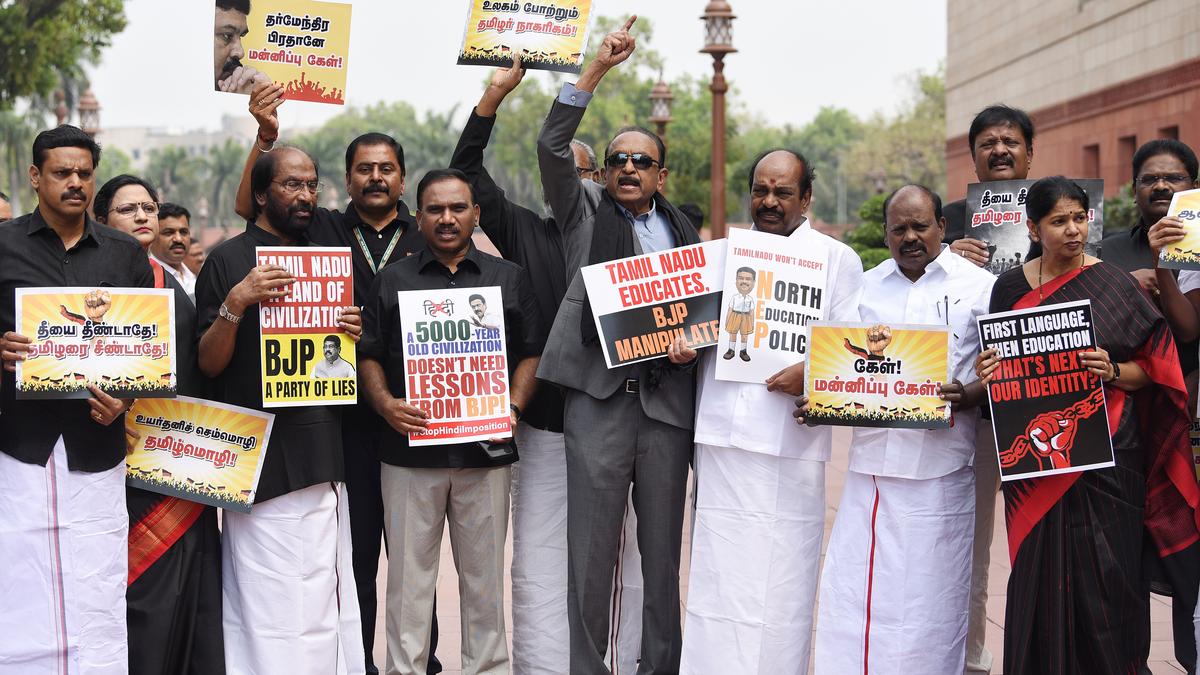
The flawed push for a third language
The Hindu
Evidence-based policymaking prioritizes data over ideology, highlighting NEP 2020's flawed trilingual mandate and the need for reform.
Evidence-based policymaking relies on data, research, and statistical analysis — not ideology, untested assumptions or political convenience. It ensures that policies address real needs, maximise effectiveness, and avoid unnecessary burdens. By this standard, the National Education Policy (NEP) 2020’s push for a third language in schools fails to meet the mark.
Any discussion on teaching a third language must begin with an honest evaluation of India’s school system and its capacity to teach subjects effectively. The Programme for International Student Assessment (PISA), a global test which evaluates reading, math, and science skills of 15-year-olds, conducted every three years by the Organisation for Economic Co-operation and Development, highlights India’s struggle. In 2009, India ranked 73 out of the 74 participating countries, ahead of only Kyrgyzstan. Since then, India has withdrawn from PISA. In contrast, countries like Singapore, China, South Korea, Estonia and Finland have consistently ranked near the top, reflecting the strength of their school education systems.
Domestic surveys paint an equally dismal picture. The National Achievement Survey (NAS), conducted every three years since 2001, assesses learning outcomes in Classes 3, 5, 8, and 10. NAS 2017 found that only 48% of Class 8 students could read a simple paragraph in their regional language or Hindi; only 47% could write an essay or letter; and just 42% had a good grasp of grammar. NAS 2021 showed slight improvements of 56%, 49%, and 44%, respectively. NAS 2018 found that English proficiency, tested only at the Class 10 level, was equally poor. Notably, NAS does not assess third-language proficiency, raising concerns about policymakers’ reluctance to scrutinise its effectiveness.
The Annual State of Education Report (ASER), conducted by the NGO Pratham, assesses school enrolment and learning outcomes in rural India. ASER 2018 found that 27% of Class 8 students couldn’t read even a Class 2-level text properly in their regional language or Hindi. This worsened to 30.4% in 2022. In 2016, the percentage of Class 8 students who could not read even simple sentences in English was 73.8%; in 2022, it was still a staggering 53.3%. Like NAS, ASER does not evaluate third-language proficiency.
Many of India’s school students are struggling with even their mother tongue and barely managing English, which raises the question: isn’t it better to teach two languages well rather than three poorly? The absence of credible data on third-language proficiency shields the policy from scrutiny. Even NEP 2020 fails to address this data gap.
Therefore, wouldn’t it be wiser to allocate scarce resources toward strengthening core subjects like math and science, and emerging technologies such as Artificial Intelligence (AI)? China is already piloting AI in 184 schools, including for six-year-olds. Estonia, Canada, South Korea, and the U.K. are integrating AI into secondary education.
NEP 2020’s trilingual policy oversimplifies a complex issue, offering a single-sentence endorsement without references to global best practices.

 Run 3 Space | Play Space Running Game
Run 3 Space | Play Space Running Game Traffic Jam 3D | Online Racing Game
Traffic Jam 3D | Online Racing Game Duck Hunt | Play Old Classic Game
Duck Hunt | Play Old Classic Game











